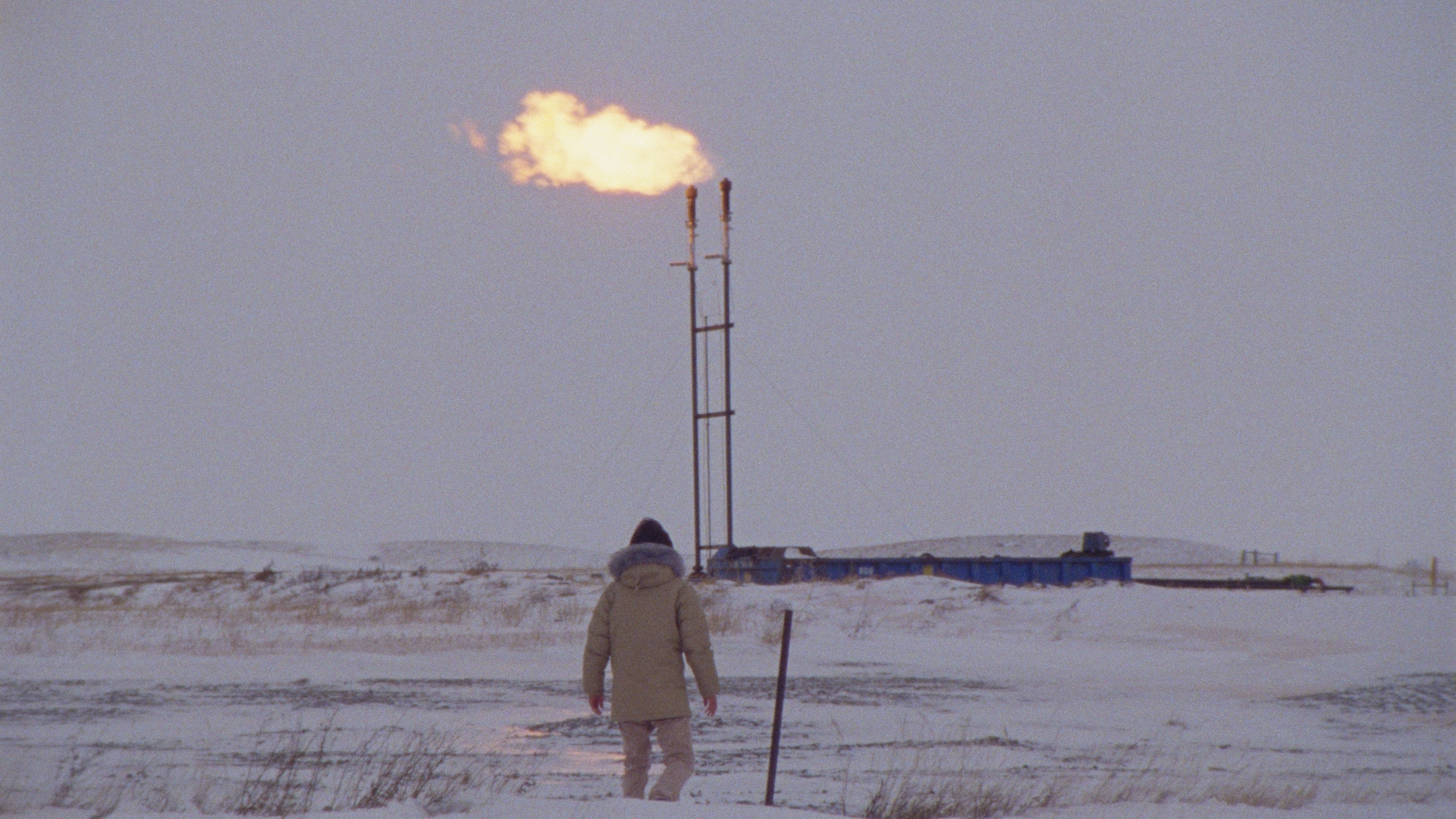
Eco-terrorism has been a tough subject to portray in recent films. The perspective is usually relegated to an antagonistic and flawed perspective, as with Thanos from the Avengers films, or an existential reflexiveness, like First Reformed. With How To Blow Up A Pipeline, director Daniel Goldhaber frames eco-terrorism with a more realistic lens and a dedication to depicting the processes of extreme climate activism.
The film follows an eclectic group of dedicated environmental activists and people banding together to sabotage a Texas pipeline. Among them include a group of Long Beach residents who have suffered from living near a refinery (Xochitl, Theo, Shawn, and Alisha), a North Dakotan who is self-taught in bomb-making (Michael), a coke-snorting couple looking for a thrill (Rowan and Logan), and a father whose land is being bought out by an oil company (Dwayne). While serviceable backstory for these characters is provided, the narrative predominantly focuses on the bomb assembly, scouting the locations, and the eventual execution of their plan. There are occasional flashbacks spread throughout that fill in the gaps (some are more effective than others; a Twitter doom-scrolling segment is a low point), but Goldhaber keeps our attention on the propulsive unfolding act of property damage by the main cast.
While an adaptation, the film takes a vastly different approach to portray the conversations and processes of eco-terrorism than its source. Andreas Malm’s nonfiction book of the same name is an argument and rationalization for eco-terrorism, drawing upon his own experience and others as evidence for the legitimacy of sabotage as an act of climate activism. The book is largely not about the specific processes of eco-terrorism, instead focusing on the rationale behind the perspective (a New York Times opinion piece jokingly retitled the book “Why To Blow Up A Pipeline”). Goldhaber’s film takes a decidedly opposite approach, focusing more on the action and planning of the film’s characters and rarely divulging their politics. The film is much more about the process: the process of assembling a crew, a bomb, and a plan, than it is about the arguments and logic behind the process. It is evident that Malm’s political arguments have been diluted and repurposed for the big screen. What feels like sections of a longer thesis become boiled down to zingers and moral platitudes in the film.
Consequently, the film also suffers from one of the main criticisms of Malm’s book: that it doesn’t account for the results of sabotage. While there are brief images of the aftermath once the mission is over, there is little consequence of the group’s actions on the community and oil industry. There are also few counter perspectives and opposition to the group’s political stance, the film defaulting to a “nothing else works” attitude.
Goldhaber’s film is a unique iteration of the heist thriller, containing an array of entertaining and well-trodden performances while superimposing climate activist politics on a film akin to The Asphalt Jungle. The trio of Ariela Barer, Sasha Lane, and Jayme Lawson (Xochitl, Theo, and Alisha respectively) dominate most of the film and provide heart and drama. Other notable performances include Jake Weary (Dwayne), infused with a concerned yet dedicated parental presence; Forrest Goodluck (Michael), achieving delicate sardonic stoicism; and Kristine Forseth and Lukas Gage (Rowan and Logan), who are the levity and most humorous characters in the film. The only other main performance is Marcus Scribner who, despite Shawn’s integral part in the plot, is not given much to do by the script.
However, the genre shift has resulted in a thoroughly engaging heist thriller. Goldhaber has a keen sense of timing, and the editor, Daniel Garber, creates memorable moments that keep the audience on the edge of their seats. Some highlights include a bomb-making scene and a bomb placement scene, both of which resulted in audible gasps at the screening I attended. The cinematography by Tehillah De Castro, who relies on a combination of dolly zooms, wide landscape shots, and visceral handheld camerawork, is another area of praise. Along with the music by Gavin Brivik (an electric propulsive, ticking score), How To Blow Up A Pipeline exceeds on a technical level in making an engaging indie thriller.
How To Blow Up A Pipeline is an impassioned reflection on climate change’s effects and a call to action against corrupt institutions. Yet, the film has an engrossing resonance (concurrent to the film’s TIFF premiere was the series of Baltic Sea explosions). Goldhaber and co maintain an effective combination of political inquiries and a thorough understanding and entertaining riff on the heist thriller genre.